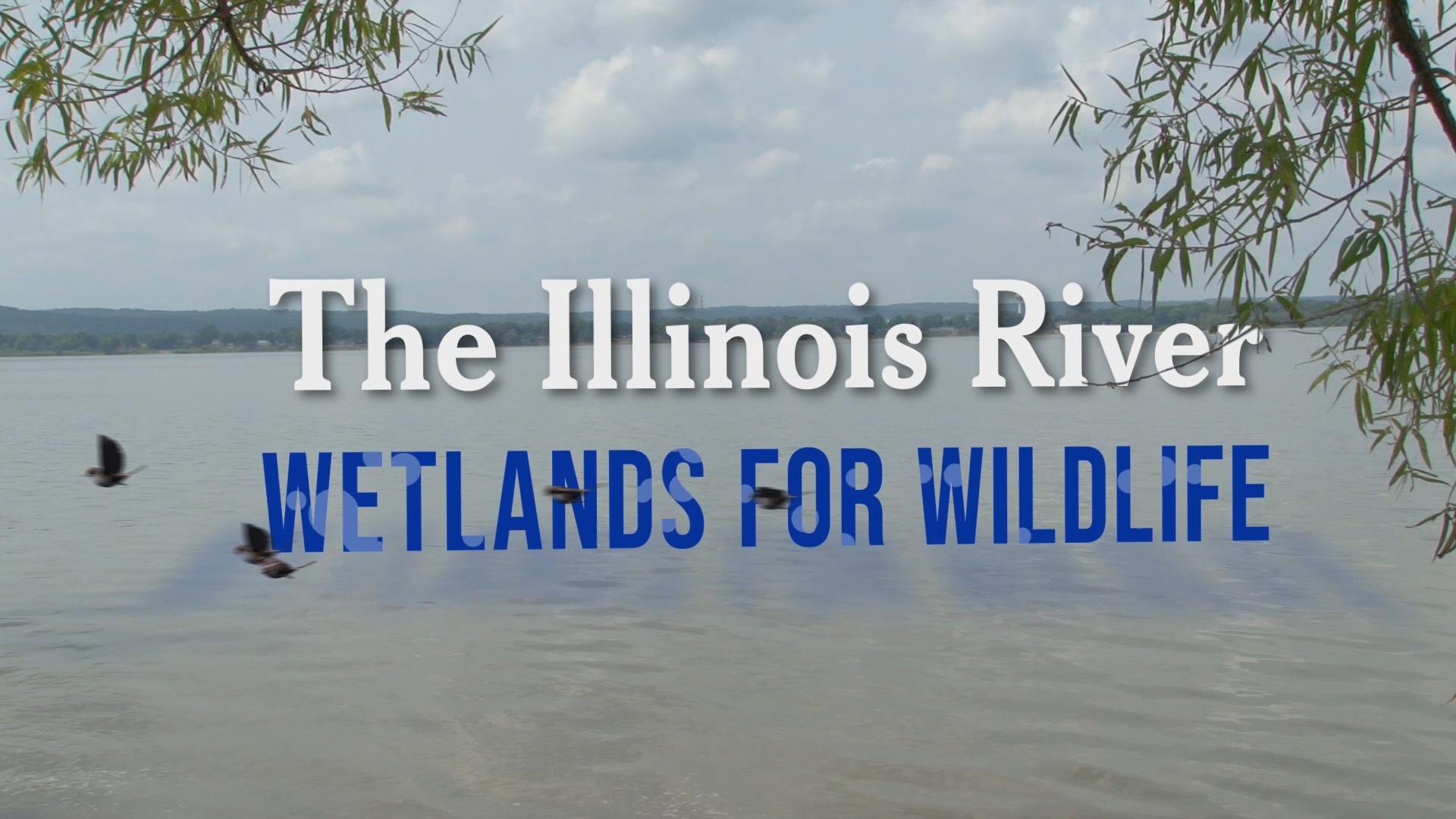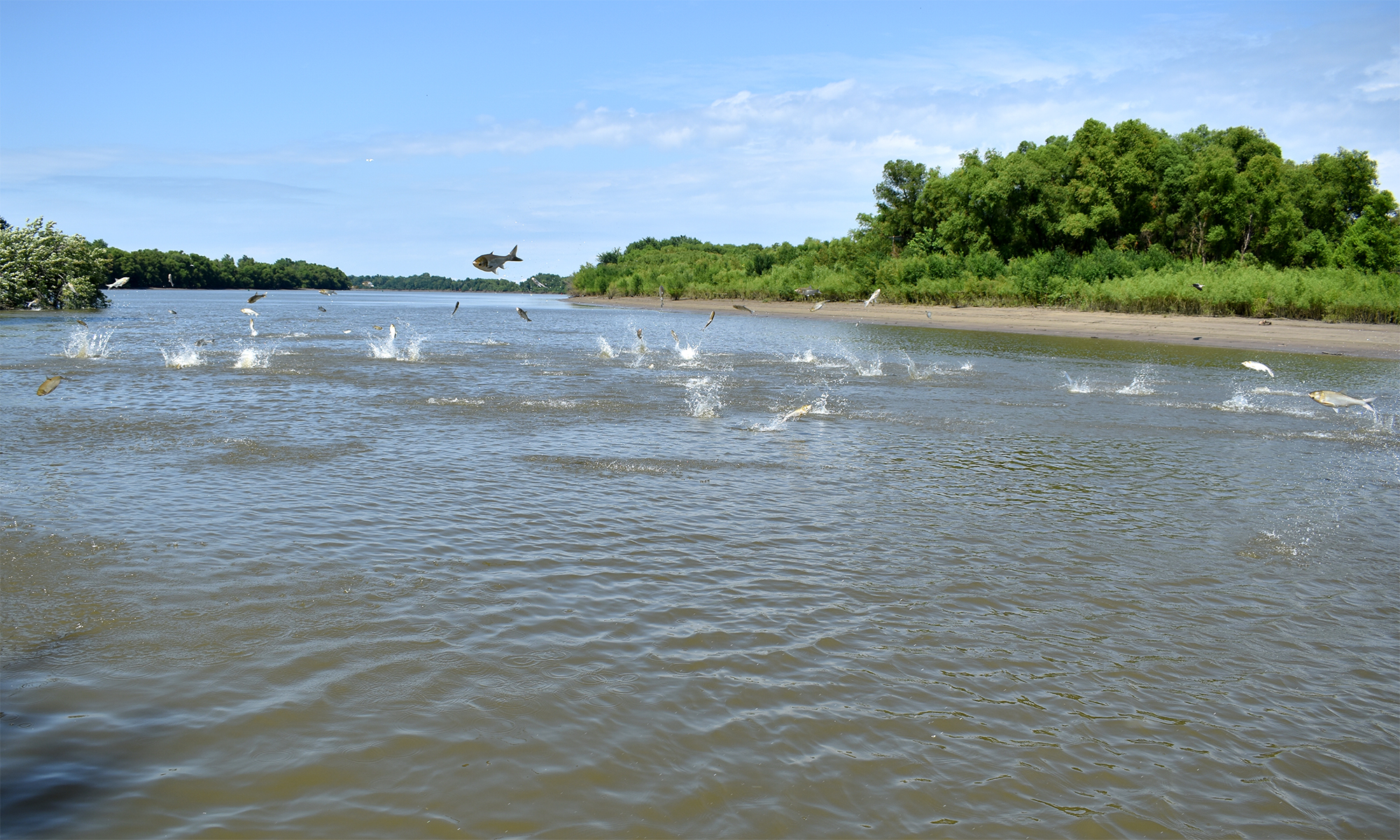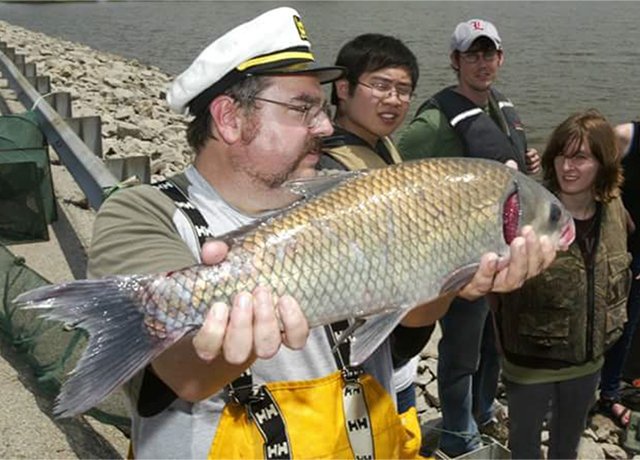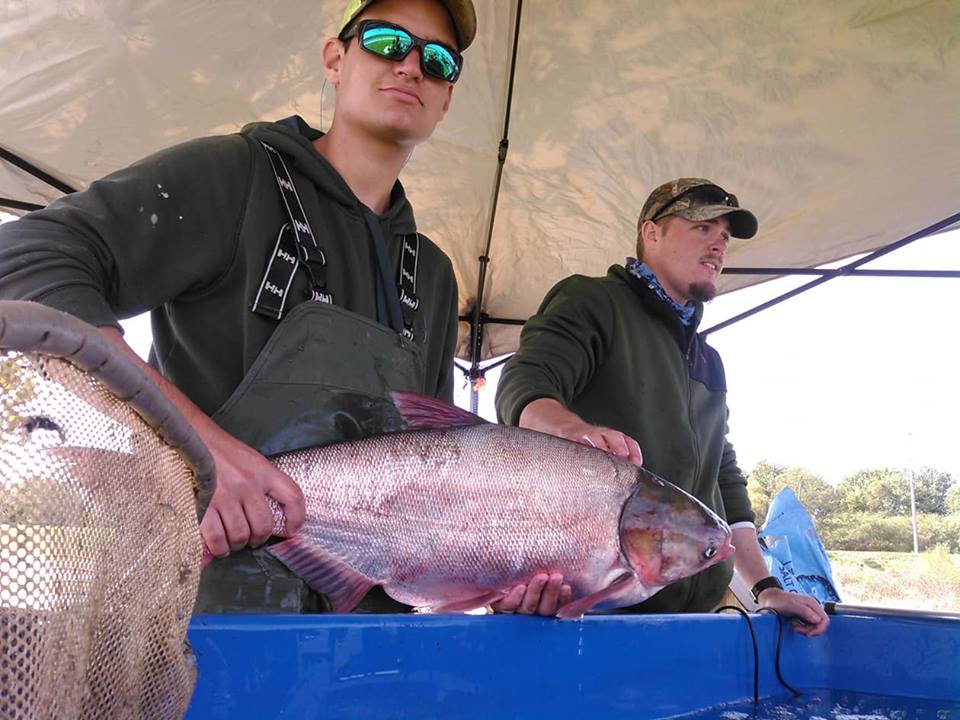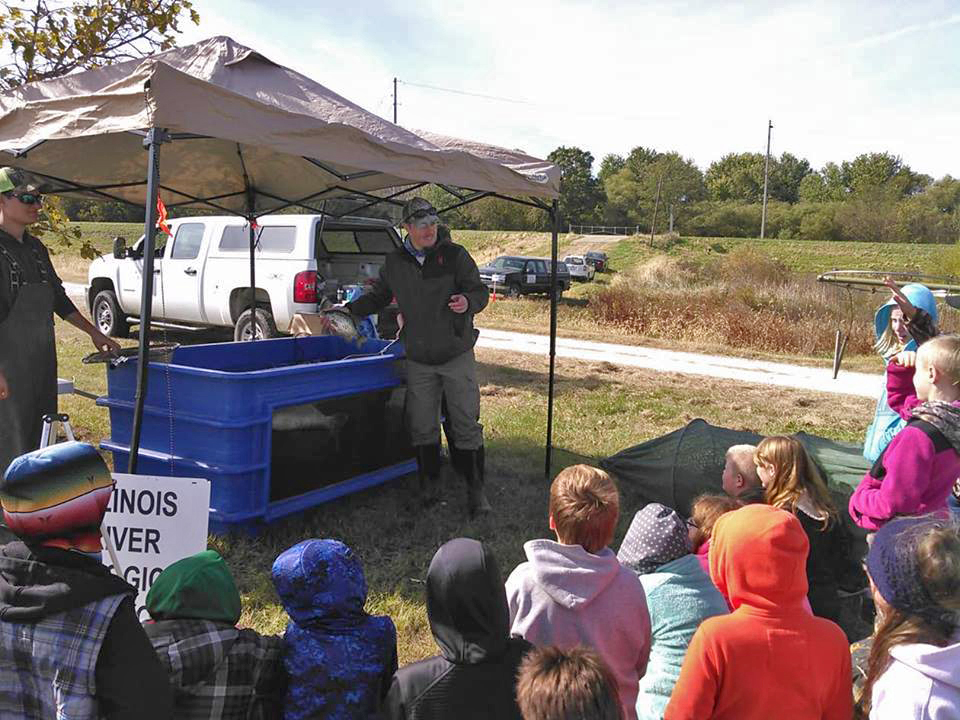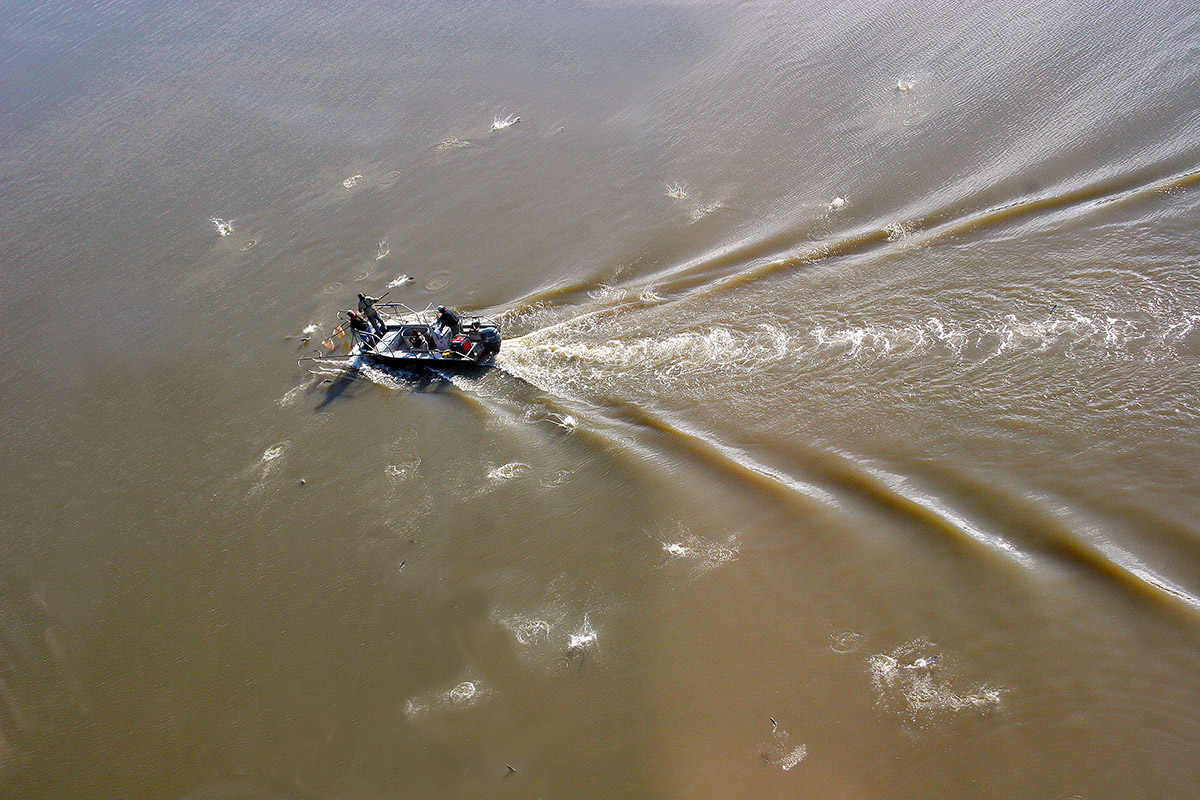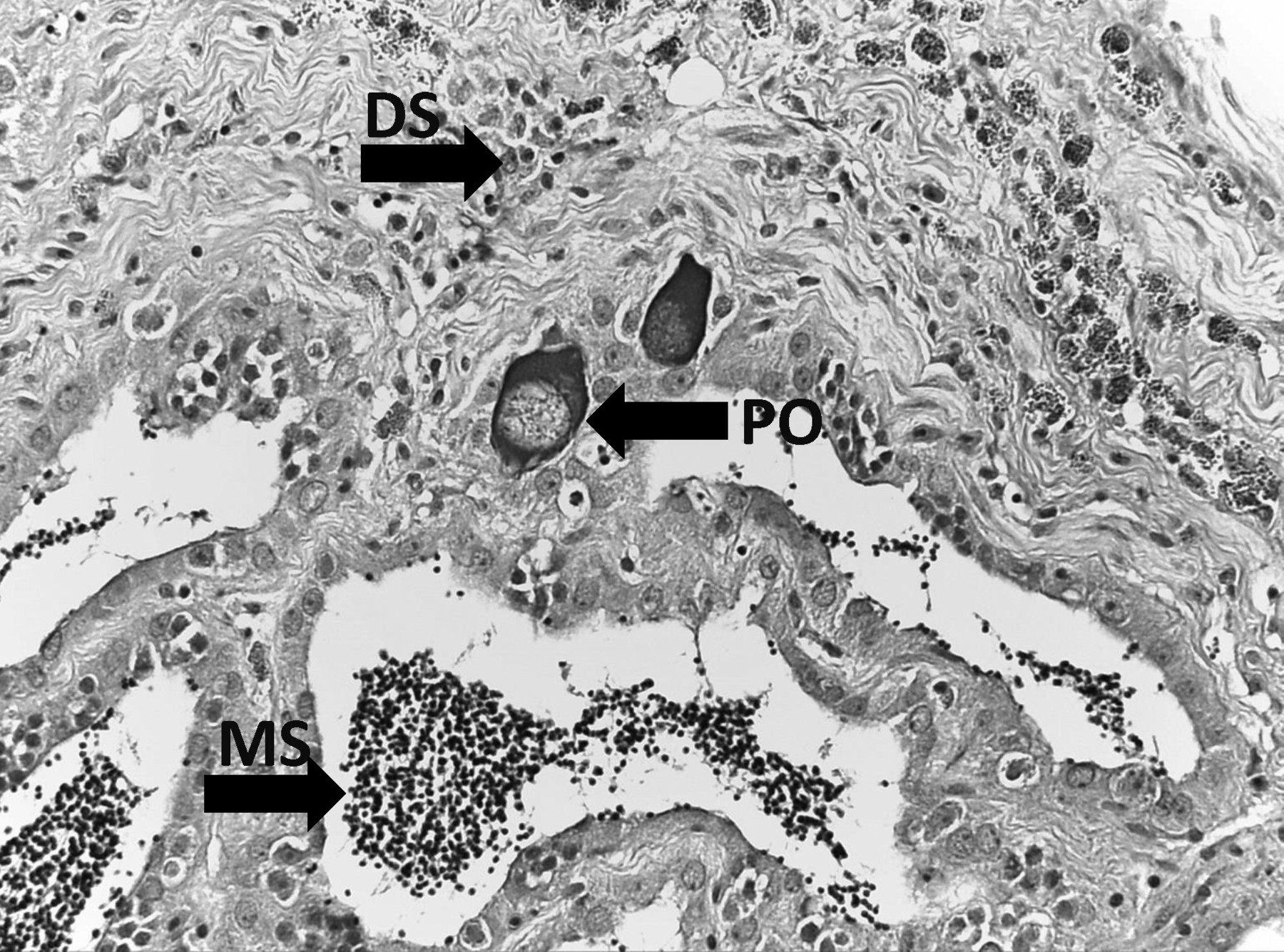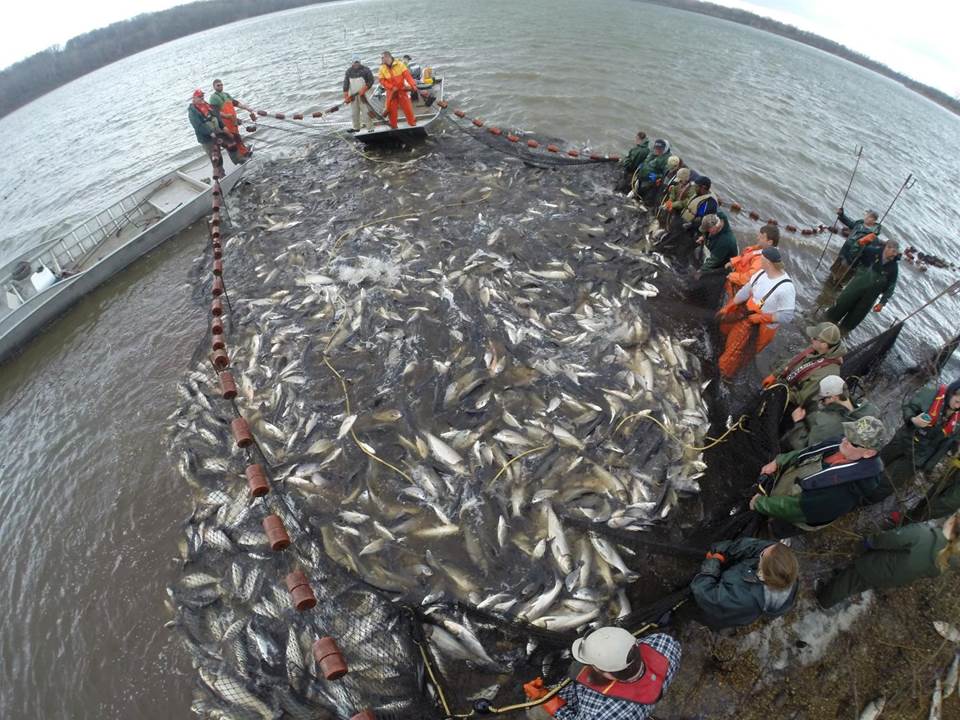
Rivers help define Illinois both on our maps and in our minds. After decades of decline driven by pollution, the major rivers of Illinois—the Wabash, Ohio, Mississippi, and Illinois—started to improve after the Clean Water Act was enacted in 1972. Unfortunately, chemical pollution may be relatively controlled, but biological pollution, most recently with the arrival of Asian carp, has been skyrocketing. Since the 1970s, Asian carp populations have spread from the lower Mississippi River Valley up the Illinois River toward Lake Michigan. Silver and Bighead carp are the two species leaving the most concern in their wake.
These invasive fish don’t prey directly on many of the species we care about, so it is tempting to ignore the nuisance of flying schools of 30-pound Asian carp in our rivers. Think again. These invaders number in the millions, and each fish is a voracious eater of the microscopic plankton that sustains fish such as Largemouth Bass and Crappies, as well as endangered icons like the rock pocketbook or creek heelsplitter mussels. This means that Asian carp are a threat to Great Lakes fish, including the billion-dollar recreational and commercial industries. Because of this threat, agencies from the Great Lakes states and Canada have seen the population trends and are extremely concerned.
In an effort to prevent the spread of Asian carp into the Great Lakes while protecting all the gains we have made in our big rivers, the Illinois Department of Natural Resources (IDNR) is using federal funding from the Great Lakes Restoration Initiative to help Illinois’ commercial fishermen suppress the exploding invasive carp population. The project has been ramping up since 2010 and involves multiple federal agencies such as the Army Corps of Engineers and the US Fish and Wildlife Service, as well as students and researchers from many Illinois universities, including the Illinois Natural History Survey (INHS) and the University of Illinois (U of I). The project covers more than 90 kilometers of the river between the Brandon Road Lock and Dam in Joliet and the Interstate 39 Bridge downstream of Starved Rock State Park. It is a complex undertaking involving the newest technology in bubble, sound, and electric barriers and fish-counting sonar, coupled with centuries-old stalwarts such as gill nets. There have even been consultations with Chinese fisherman from the Yangtze River Valley, where these carp have been fished for centuries, on how to use multiple boat teams to conduct a thousand ton fish drive, like cowboys in the old west.
Using all these approaches, Illinois fishermen are becoming more adept at harvesting fish, with some recent state totals of up to 10,000 pounds. The big question, however, is whether these efforts are working. Does harvesting fish to suppress the Asian carp benefit our rivers? Early work from 2000 to 2010 showed a tremendous drop in zooplankton populations with planktivorous fish becoming malnourished over time. One key example is the Gizzard shad, an important forage fish for the recreational species Bass and Crappie. However, since 2010, improvements in zooplankton have occurred where harvest is very high (>8000 kilograms per month). Subsequently, an INHS team in Yorkville has shown that the health and condition of Gizzard shad have bounced back in areas where Asian carp numbers have declined the fastest.
Despite these successes, the threat from Asian carp is still great. Harvest works only as long as we keep the pressure on. INHS, the U of I, and the IDNR are collaborating to evaluate various physical barriers that complement harvesting; electric barriers, carbon dioxide bubble curtains, and hydrologic disconnection are just a few of the technologies being developed and evaluated to capitalize on the success of commercial harvests.
